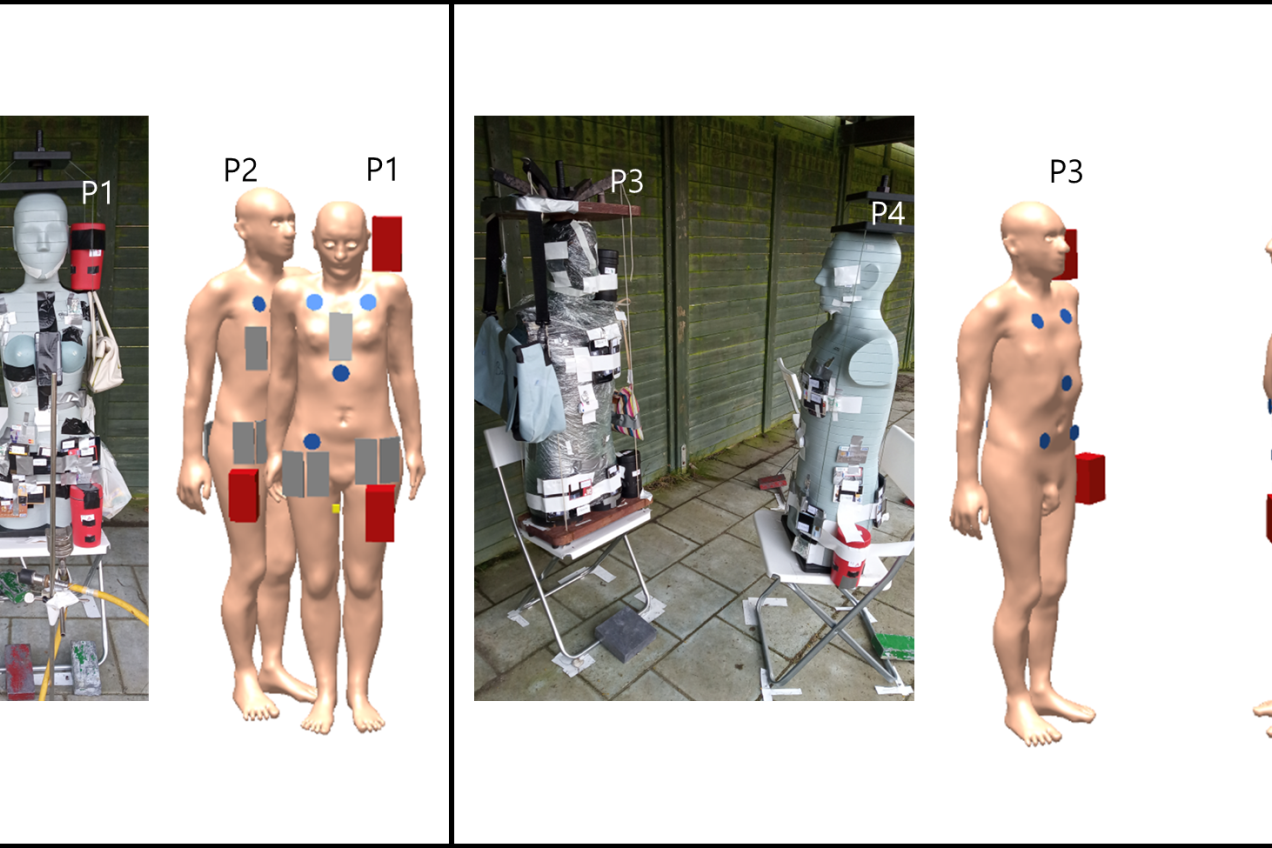21st EURADOS Webinar: Computational support for Retrospective Dosimetry: Analyses from an Inter-Laboratory Comparison exercise

Register here
When?
Tuesday, September 26th, 2023 · 10:00 CEST
Overview
Personal dosemeters are worn by individuals occupationally exposed to potentially hazardous sources of ionizing radiation to estimate the doses that they receive. However, it is conceivable that people who are not monitored might also be exposed to significant penetrating doses: accidental exposures from the increasing use of ionizing radiation in hospitals, the nuclear industry and research are obvious examples, but sadly there is also the threat of malicious attacks with radiological agents. For these reasons, considerable global research effort has been expended to investigate fortuitous retrospective dosemeters, i.e. everyday objects that happen to have dosimetric qualities and can act as emergency indicators of the absorbed doses received by exposed individuals. The idea is that such dosemeters may be analyzed after a radiological incident as part of initial-phase (‘triage’) dosimetry, with the results then helping to inform the evidence base for deciding appropriate clinical treatment (if any). Whilst many such techniques have shown promising results, an inevitable drawback is that, unlike routine-issue personal dosemeters, such fortuitous dosemeters are typically neither designed with their dosimetric capabilities in mind, nor located in optimal positions for assessing the doses to individuals. In parallel with their investigation, a significant campaign of computational dosimetry research has therefore also been developed, in order to characterize the dosimetric performances of fortuitous dosemeters, better understand their limitations, and provide reference dosimetry that benchmarks their responses and relates the absorbed doses deposited in them to the doses concurrently received by other materials and by the various internal organs of the individual.
Computational dosimetry using Monte Carlo radiation transport simulations was applied for the 2019 EURADOS-RENEB field test. That test was an inter-laboratory comparison (ILC) exercise of retrospective dosimetry techniques, in which a variety of different dosemeters were positioned around anthropomorphic phantoms and exposed to highly non-uniform photon fields, corresponding to a realistic small-scale radiological accident. The methods, results and implications from these computational dosimetry analyses are presented in this webinar.
The first presentation describes the modelling approach and compares the results from the reference dosimetry. The simulations were performed using MCNP6.2 codes with ICRP reference voxel phantoms, and Geant4 codes with mesh-type phantoms, by four institutes. Four exposure scenarios using Ir-192 and computerized anthropomorphic phantoms were modeled: relatively homogeneous in a predominantly AP direction, heterogeneous in predominantly AP and LLAT directions, and partially shielded. The items containing dosimetric materials, such as mobile phones, blood tubes, and surface dosimeters, were defined and located based on the experimental pictures. Absorbed doses of reference dosimeters, such as TLD, OSLD, RPLD, and reference glasses, in and outside of the phantoms were calculated and compared to the measured doses. Photon energy spectra were evaluated to convert the air kerma to the absorbed doses in each dosimeter material. The simulation results from four institutes showed good agreement with each other, showing average dose ratios of less than 14%. Most of the calculations were well aligned with the experimental data, with Pearson’s R-value reaching up to 0.9595 and the adjusted R-squared value up to 0.9194, but systematic differences were confirmed depending on the exposure scenarios. Therefore, the accuracy and limitations of the calculation techniques for the given exposure structures were discussed.
Dose conversion factors were also considered in an attempt to compare and harmonize the results obtained from the various retrospective dosemeters, which can differ greatly from each other and from the concurrent dose to the individual due to factors such as their location and the exposure conditions. The issues and uncertainties arising from the application of conversion coefficients are explored in the second presentation, within the framework of the recent ILC of retrospective dosimetry. The impacts and difficulties of adopting pre-calculated tables of generic conversion coefficients are evaluated first, and then compared against those arising through the use of bespoke data derived by the MCNP and GEANT4 Monte Carlo modelling, and also against not performing dose harmonization at all. It is shown that each approach is associated with drawbacks and limitations, both physical and due to human factors, with the uncertainties and inconsistencies in the underlying measured data also leading to complications.
Agenda
- Introduction to EURADOS WG10 "Retrospective Dosimetry" (Liz Ainsbury, UKHSA)
- Monte Carlo reference dosimetry for the EURADOS WG-10 and RENEB field test of retrospective dosimetry techniques in a realistic exposure scenario (Hyoungtaek Kim, KAERI)
- Dose conversion in retrospective dosimetry: Results and implications from an inter-laboratory comparison featuring a realistic exposure scenario (Jonathan Eakins, UKHSA)
